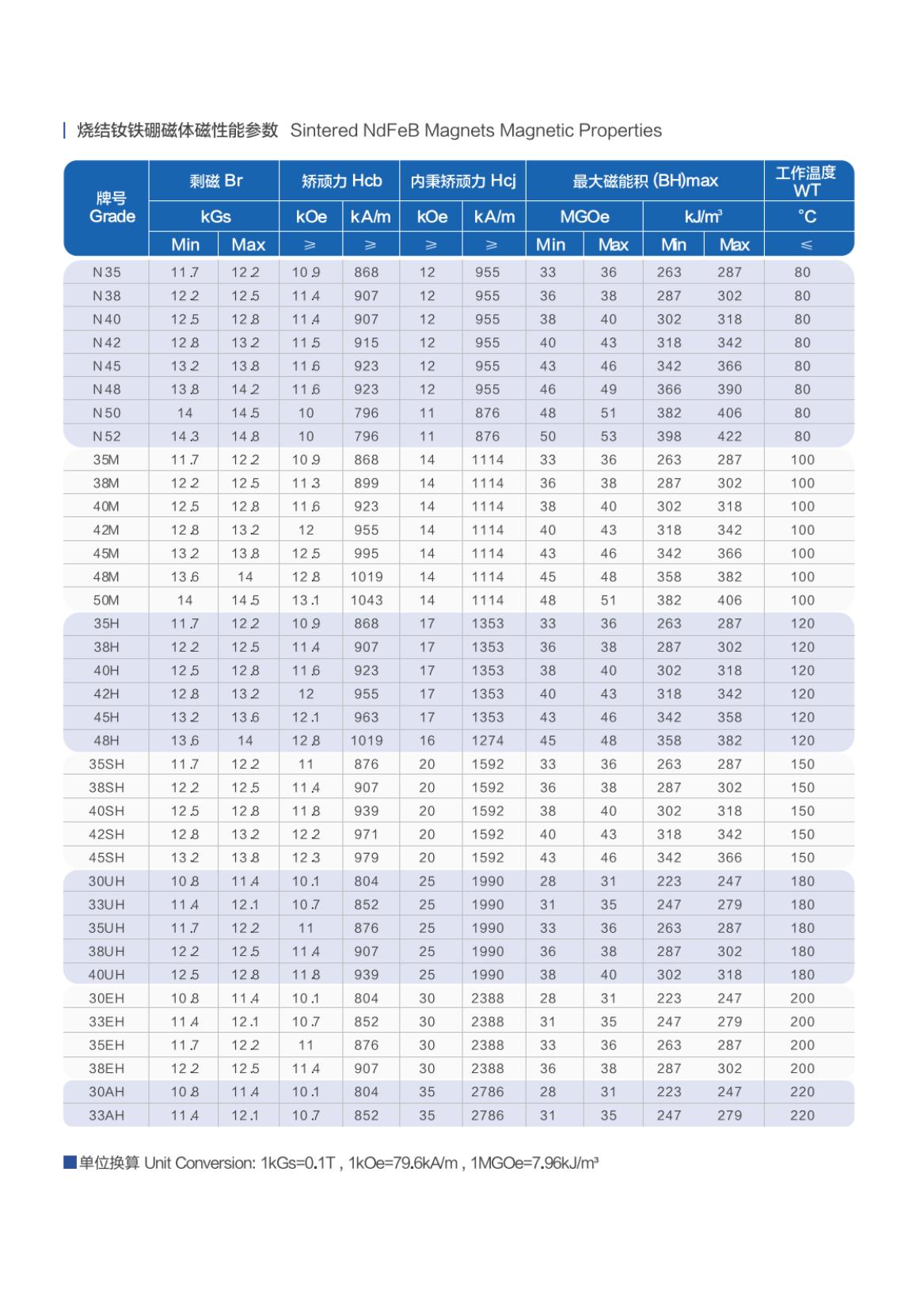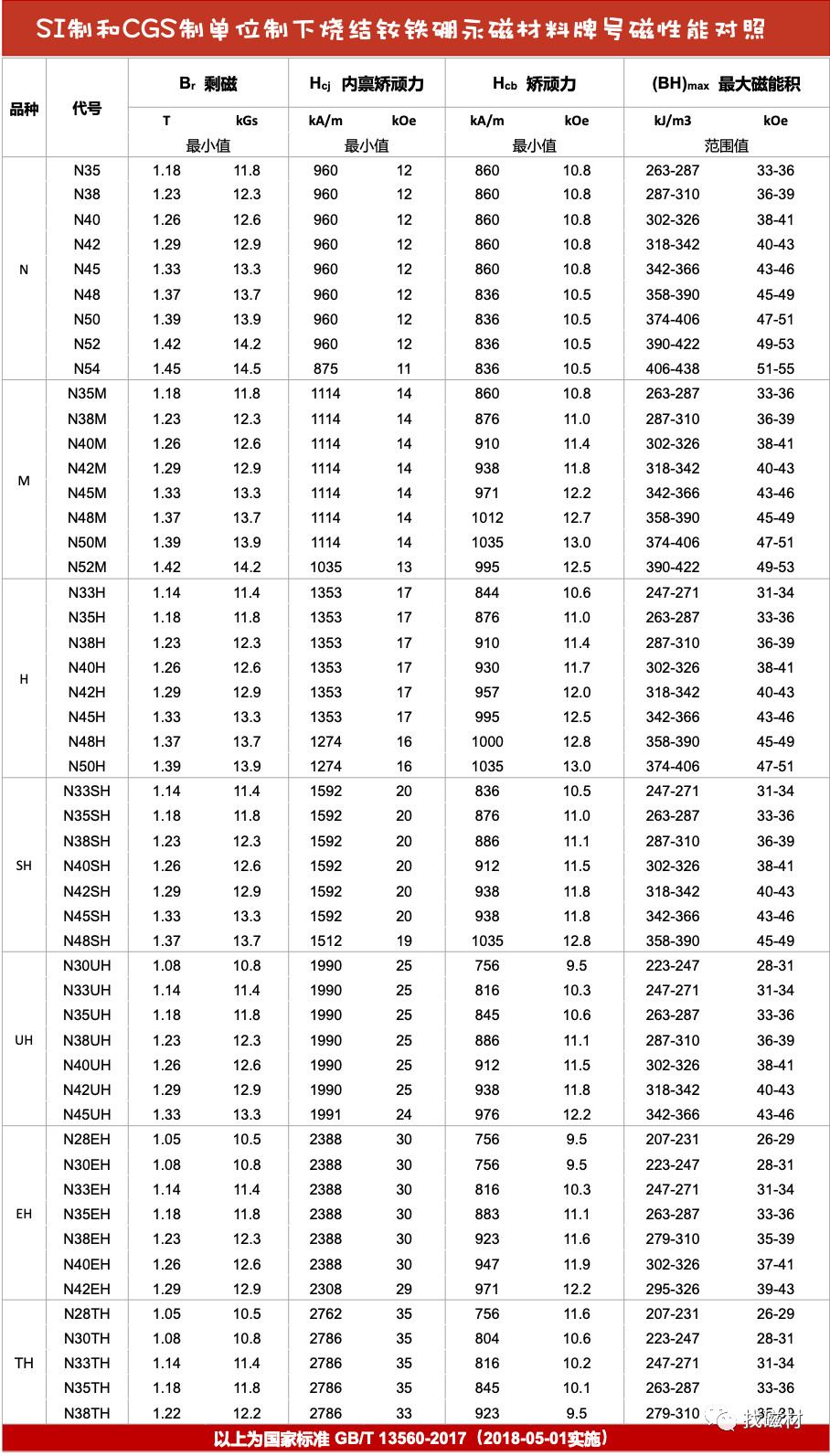What is the meaning of different product Grade of sintered Ndfeb?
First of all, the common sintered NdFeB grades can be divided into seven categories: N, M, H, SH, UH, EH and TH. Except for the N type, every other type will appear at the end of the product brand. For example, N38M is M series, N38TH is TH series, and if there is no letter after "N38", then it is N series. (Of course, there are some uncommon and higher-performance grades in the back. If you are interested, you can learn about it yourself. We will only introduce the more common ones today)

Secondly, there are four main indicators for measuring the performance of sintered NdFeB products
Br remanence: the unit is Tesla (T) and Gauss (Gs), 1Gs = 0.0001T. It refers to the magnetic induction intensity of the sintered neodymium iron boron magnet when a magnet is magnetized by an external magnetic field in a closed circuit environment until the technology is saturated and then the external magnetic field is cancelled. In layman's terms, it can be temporarily understood as the magnetic force of the magnet after magnetization.
Hcb Coercivity: The unit is Oersted (Oe) or ampere/meter (A/m), 1A/m=(4π/1000)Oe, 1 Oe=(1000/4π) A/m. When the magnet is magnetized in the reverse direction, the value of the reverse magnetic field strength required to reduce the magnetic induction intensity to zero is called the magnetic coercive force. However, the magnetization of the magnet is not zero at this time, but the applied reverse magnetic field and the magnetization of the magnet cancel each other out. At this time, if the external magnetic field is removed, the magnet still has certain magnetic properties.
Hcj Intrinsic coercive force: The strength of the reverse magnetic field required to reduce the magnetization of the magnet to zero. We call it the intrinsic coercive force. Its unit of measurement is the same as the coercive force. The classification of magnetic grades is based on their intrinsic coercivity. Low coercivity N, medium coercivity M, high coercivity H, ultra-high coercivity UH, extremely high coercivity EH, highest coercivity TH.
(BH)max Maximum magnetic energy product: represents the magnetic energy density established in the space between the two magnetic poles of the magnet, that is, the static magnetic energy per unit volume of the air gap, which is the maximum value of the product of B and H, and its size directly indicates the performance of the magnet . The number in the grade of the magnetic material represents the theoretical maximum energy product of the product.
Again, we can see that there are two measurement units for each performance index. This is because they use different unit systems—SI system and CGS system, that is, the International System of Units and the Gaussian System of Units, which are like length units. The difference between "m" and "li". There is a certain conversion relationship between the International System of Units and the Gaussian System of Units, but it is more complicated, so we won't introduce it.
Finally, it is not difficult to find that the performance of sintered NdFeB products under each brand is not a unique fixed value, but a numerical range. The performance ranges of products from different manufacturers are not completely consistent. When purchasing, you need to pay special attention to whether the performance of the supplier’s products can meet your requirements. The latest national standard for sintered NdFeB (GB/T 13560-2017) promulgated by the General Administration of Quality Supervision, Inspection and Quarantine and the Standardization Committee (GB/T 13560-2017) came into effect in May 2018, stipulating the minimum or interval values of various performance indicators for products of different brands, as shown in the figure below ,For reference.

Magnet Forever offers you more professional magnet knowledge
